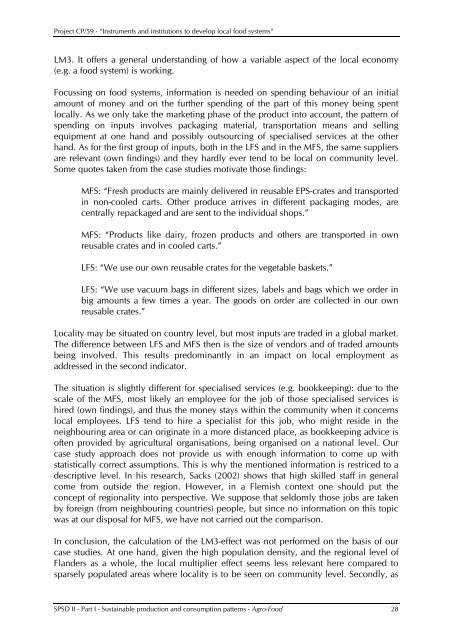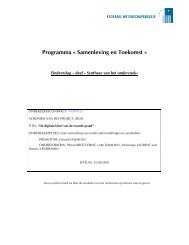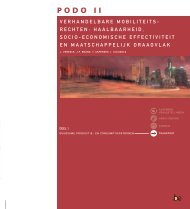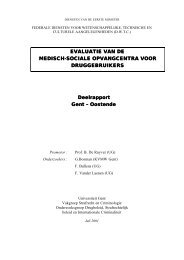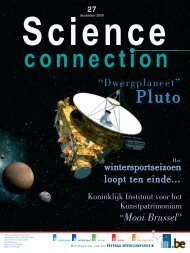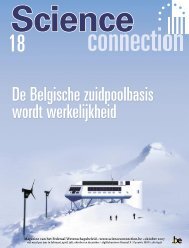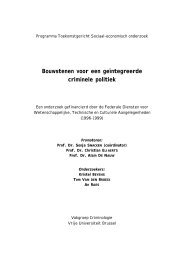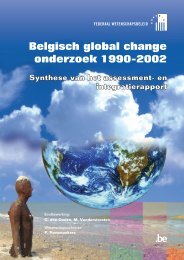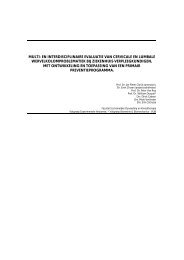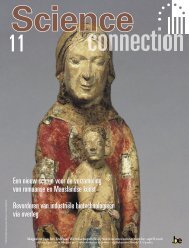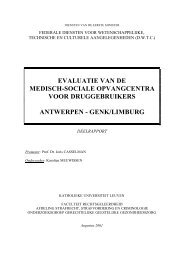chapter 3 inventory of local food systems
chapter 3 inventory of local food systems
chapter 3 inventory of local food systems
You also want an ePaper? Increase the reach of your titles
YUMPU automatically turns print PDFs into web optimized ePapers that Google loves.
Project CP/59 - “Instruments and institutions to develop <strong>local</strong> <strong>food</strong> <strong>systems</strong>”<br />
LM3. It <strong>of</strong>fers a general understanding <strong>of</strong> how a variable aspect <strong>of</strong> the <strong>local</strong> economy<br />
(e.g. a <strong>food</strong> system) is working.<br />
Focussing on <strong>food</strong> <strong>systems</strong>, information is needed on spending behaviour <strong>of</strong> an initial<br />
amount <strong>of</strong> money and on the further spending <strong>of</strong> the part <strong>of</strong> this money being spent<br />
<strong>local</strong>ly. As we only take the marketing phase <strong>of</strong> the product into account, the pattern <strong>of</strong><br />
spending on inputs involves packaging material, transportation means and selling<br />
equipment at one hand and possibly outsourcing <strong>of</strong> specialised services at the other<br />
hand. As for the first group <strong>of</strong> inputs, both in the LFS and in the MFS, the same suppliers<br />
are relevant (own findings) and they hardly ever tend to be <strong>local</strong> on community level.<br />
Some quotes taken from the case studies motivate those findings:<br />
MFS: “Fresh products are mainly delivered in reusable EPS-crates and transported<br />
in non-cooled carts. Other produce arrives in different packaging modes, are<br />
centrally repackaged and are sent to the individual shops.”<br />
MFS: “Products like dairy, frozen products and others are transported in own<br />
reusable crates and in cooled carts.”<br />
LFS: “We use our own reusable crates for the vegetable baskets.”<br />
LFS: “We use vacuum bags in different sizes, labels and bags which we order in<br />
big amounts a few times a year. The goods on order are collected in our own<br />
reusable crates.”<br />
Locality may be situated on country level, but most inputs are traded in a global market.<br />
The difference between LFS and MFS then is the size <strong>of</strong> vendors and <strong>of</strong> traded amounts<br />
being involved. This results predominantly in an impact on <strong>local</strong> employment as<br />
addressed in the second indicator.<br />
The situation is slightly different for specialised services (e.g. bookkeeping): due to the<br />
scale <strong>of</strong> the MFS, most likely an employee for the job <strong>of</strong> those specialised services is<br />
hired (own findings), and thus the money stays within the community when it concerns<br />
<strong>local</strong> employees. LFS tend to hire a specialist for this job, who might reside in the<br />
neighbouring area or can originate in a more distanced place, as bookkeeping advice is<br />
<strong>of</strong>ten provided by agricultural organisations, being organised on a national level. Our<br />
case study approach does not provide us with enough information to come up with<br />
statistically correct assumptions. This is why the mentioned information is restriced to a<br />
descriptive level. In his research, Sacks (2002) shows that high skilled staff in general<br />
come from outside the region. However, in a Flemish context one should put the<br />
concept <strong>of</strong> regionality into perspective. We suppose that seldomly those jobs are taken<br />
by foreign (from neighbouring countries) people, but since no information on this topic<br />
was at our disposal for MFS, we have not carried out the comparison.<br />
In conclusion, the calculation <strong>of</strong> the LM3-effect was not performed on the basis <strong>of</strong> our<br />
case studies. At one hand, given the high population density, and the regional level <strong>of</strong><br />
Flanders as a whole, the <strong>local</strong> multiplier effect seems less relevant here compared to<br />
sparsely populated areas where <strong>local</strong>ity is to be seen on community level. Secondly, as<br />
SPSD II - Part I - Sustainable production and consumption patterns - Agro-Food 28


